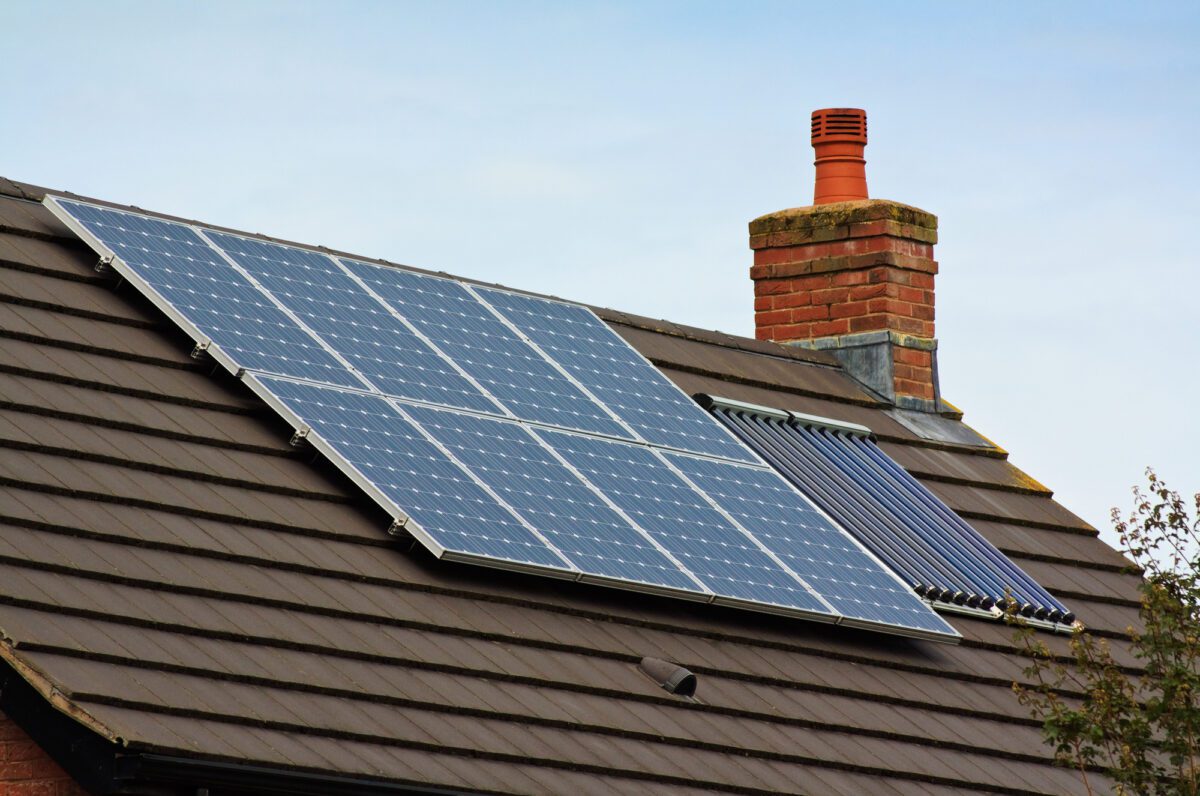Ensuring safety is paramount. Enter solar anti-islanding, a crucial feature that prevents solar panels from generating power during blackouts and grid outages. This feature is especially important when relying on battery backup, interactive inverters, and generators. Unlike an island getaway, where isolation is welcomed, islanding in the context of solar energy poses serious risks to the power grid. One main disadvantage of islanding is the potential for blackouts. In such situations, generators can be used as a backup power source. Anti-islanding protection acts as a bridge between the solar system, transformers, generators, interactive inverters, loads, and the utility grid, ensuring the safety of utility workers and preventing damage to the grid.
Exploring the Concept of Solar Islanding
Solar islanding is a term used to describe a situation where a solar power system, including transformers, pv inverters, and interactive inverters, continues to generate electricity even when it is disconnected from the main power grid circuit. This phenomenon of solar islanding can pose risks, as utility workers may mistakenly assume that the power from the transformer is off and work on the grid lines, potentially leading to accidents or injuries. It is important to ensure proper safety measures are in place when installing a solar panel system to prevent such incidents from occurring.
Understanding solar islanding is crucial for implementing effective anti-islanding measures in the power grid. PV inverters play a key role in monitoring and controlling the power output of solar installations to prevent grid failure. By comprehending the conditions and changes that can cause solar islanding in solar power systems, we can develop strategies to prevent it and ensure the safety of both utility workers and homeowners.
One of the primary causes of solar islanding is the presence of battery storage in a solar panel system with an inverter. The inverter converts the DC power generated by the PV panels into AC power for use by loads. This conversion process creates a circuit that can lead to islanding. When there is sufficient energy stored in batteries, the solar inverter enables the solar islanding system to continue generating power independently, even if there is an outage or disconnection from the grid. This is made possible by using a Solectria Solar circuit.
To detect and prevent solar islanding, various anti-islanding measures are employed, such as using an inverter with PV systems that can detect changes in phase. These measures include using specialized inverters that can monitor changes in grid voltage and frequency in solar power systems. These inverters are an essential component of a solar panel system, ensuring that the system can detect and prevent solar islanding. Solar islanding is a phenomenon where a solar energy island continues to generate power even when the main grid is down. If there are any irregularities in the circuit or changes in the PV conditions, these inverters will automatically shut down the solar system to prevent islanding.
Certain regulations and standards have been put in place by organizations like IEEE (Institute of Electrical and Electronics Engineers) to ensure that PV systems with inverters adhere to specific requirements for safe operation, including anti islanding protection and load management. These standards outline guidelines for the installation of a solar panel system, interconnection protocols with the grid, testing procedures, and the use of a solar inverter to convert solar power.
Understanding Solar Anti-Islanding Protection
Solar anti-islanding protection is essential for maintaining the stability of the electrical grid and preventing potential damage caused by islanded operation. The inverter plays a crucial role in detecting and disconnecting the load from the grid in case of an islanding event. This protection mechanism ensures that the signal between the inverter and the grid remains intact, preventing any potential harm to the system. This section will delve into the mechanisms involved in solar anti-islanding protection and highlight various methods used for effective detection and disconnection. The key component in ensuring anti-islanding protection is the inverter, which is responsible for converting the DC power from the solar panels into AC power that can be used by the load. By monitoring the signal from the grid, the inverter can detect any abnormalities that may indicate islanding and initiate the necessary disconnection to ensure safety.
Mechanisms for Grid Loss Detection
One of the primary objectives of solar anti-islanding protection is to detect when there is a loss of connection with the electrical grid. This detection is crucial for the inverter, as it needs a reliable signal from the grid to function properly and supply power to the load. This detection mechanism ensures that the solar inverter system promptly disconnects from the grid, preventing it from operating independently as an islanded load. By using an inverter, it helps protect both the solar system itself and any utility workers who may be working on repairing or restoring power to the grid. The inverter converts the DC signal from the solar panels into AC load that can be used by the electrical appliances. This prevents any potential harm or damage caused by islanding, where the solar system continues to generate power even when the grid is down.
Voltage and Frequency Monitoring
Voltage and frequency monitoring are commonly employed methods for effective anti-islanding protection in solar power systems. These methods utilize a solar inverter to monitor the voltage and frequency signals to detect any abnormalities in the grid connection. By continuously monitoring these signals, the solar inverter can ensure that it is not feeding power into the grid when it is disconnected or experiencing a fault, thus protecting the system and any connected loads. These mechanisms continuously monitor the signal and inverter parameters, comparing them to predefined thresholds to detect solar islanding. If there is a significant deviation from these thresholds in the inverter signal, indicating a loss of grid connection, the anti-islanding protection system triggers disconnection to prevent islanding.
Other Methods for Anti-Islanding Protection
In addition to voltage and frequency monitoring, an inverter uses other techniques to ensure effective anti-islanding protection. These techniques include signal monitoring. These include phase angle displacement, rate of change of frequency (ROCOF) detection, impedance measurement, active disturbance rejection control (ADRC), signal, and inverter. Each method, including the inverter, has its own advantages and considerations depending on factors such as system complexity, cost-effectiveness, and response time.
Importance of Solar Anti-Islanding Protection
The implementation of robust solar anti-islanding protection measures is essential for safeguarding both the integrity of the electrical grid and the safety of personnel working on it. Without proper detection and disconnection mechanisms in place, an islanded solar system could continue generating power during a grid outage.
The Role of Inverters in Grid-Tied Solar Systems
In grid-tied solar systems, inverters play a crucial role in converting the direct current (DC) power generated by solar panels into alternating current (AC) power that can be used in homes or businesses. These devices are responsible for ensuring that the power produced by the solar panels is compatible with the electrical system and can be seamlessly integrated with the utility grid.
Converting DC to AC Power
The primary function of inverters is to convert the DC power generated by solar panels into AC power, which is what most appliances and electrical systems use. By converting the energy from one form to another, inverters enable us to harness the maximum potential of solar energy and make it usable for our daily needs.
Incorporating Anti-Islanding Functionality
One critical aspect of grid-tied inverters is their incorporation of anti-islanding functionality. This feature ensures safe operation by preventing solar systems from continuing to generate electricity when there is a disruption in grid power supply.
Compliance with Standards and Regulations
Grid-tied inverters must adhere to specific standards and regulations regarding anti-islanding protection. These measures are put in place to protect utility workers who may be repairing or maintaining power lines during an outage. By automatically disconnecting from the grid when necessary, these inverters help prevent potentially hazardous situations.
How Does Anti-Islanding Work in Grid-Connected Inverters?
Grid-connected inverters play a crucial role in ensuring the safe and efficient operation of solar systems. One important feature of these inverters is their ability to detect and prevent a phenomenon known as “solar anti-islanding.” But how does this anti-islanding function actually work? Let’s explore.
Continuous Monitoring
Grid-connected inverters continuously monitor various parameters of the grid, such as voltage and frequency. This constant monitoring allows them to detect any abnormalities that may indicate a grid outage or instability.
Immediate Disconnection
When an inverter detects such abnormalities, it immediately disconnects from the grid. This means that if there is a power outage or other issues with the grid, the solar system will also shut down to prevent it from operating independently.
Ensuring Worker Safety
The purpose of this immediate disconnection is not only to protect the integrity of the electrical grid but also to ensure worker safety. When workers are repairing or maintaining power lines, they need assurance that there are no active sources of electricity that could pose risks.
By disconnecting from the grid during abnormal conditions, grid-connected inverters eliminate the risk of creating an “island” where electricity continues to flow from solar panels even when the main power supply is down.
Ensuring Worker Safety and Preventing Inverter Damage
To ensure the safety of utility workers and prevent damage to inverters, it is crucial to implement proper safety protocols and equipment. Anti-islanding protection plays a vital role in safeguarding utility workers by preventing unexpected power generation during maintenance or repairs.
Promptly disconnecting from the grid during a power outage is essential to avoid inverter damage. By doing so, the inverter can be protected from potential voltage fluctuations or irregularities that may occur when power is restored. This precautionary measure helps maintain the longevity of the inverter and ensures its optimal performance.
Implementing backup power solutions, such as battery storage systems, can provide an additional layer of protection for both worker safety and inverter functionality. During outages, these systems can supply uninterrupted power to critical loads while isolating the solar system from the grid. This prevents any potential backfeeding of electricity into the grid, which could endanger utility workers.
Furthermore, harmonics caused by solar inverters can affect the overall stability of the electrical system. Implementing appropriate equipment and safety features can help mitigate these harmonics and ensure that utility workers are not exposed to unnecessary risks when working on solar installations.
Detecting Grid Power Loss in Anti-Islanding Mechanisms
To ensure the effectiveness of anti-islanding mechanisms, it is crucial to have reliable methods for detecting grid power loss. These mechanisms rely on monitoring various grid parameters to identify any interruptions or failures. Let’s explore two key techniques used in this process: voltage monitoring and frequency monitoring.
Voltage Monitoring
One way to detect grid power loss is through voltage monitoring. This technique involves continuously measuring the grid voltage and looking for significant drops or fluctuations. When there is a sudden decrease in voltage beyond a certain threshold, it indicates that the grid has experienced an outage or interruption. This information triggers the anti-islanding mechanism to disconnect from the grid and ensure worker safety.
Frequency Monitoring
Another essential method for detecting power loss is frequency monitoring. By continuously measuring the power frequency, anti-islanding mechanisms can identify deviations from the standard frequency range. During a grid outage, there may be a significant change in frequency due to a lack of synchronization with other connected systems. The anti-islanding mechanism detects such deviations and promptly disconnects from the grid, preventing any potential damage to inverters or other equipment.
By combining both voltage and frequency monitoring techniques, anti-islanding mechanisms can effectively detect grid power loss and respond accordingly. These measures not only protect workers but also safeguard against potential damage caused by continued operation during a blackout or disruption.
Active and Passive Methods for Detecting Islanding
To ensure reliable detection of islanding conditions in solar anti-islanding systems, both active and passive methods are employed. These methods serve the purpose of detecting if a photovoltaic (PV) system is still connected to the grid or if it has become isolated.
Active Methods: Injecting Test Signals
Active methods involve injecting test signals into the grid to determine if it is still present. By monitoring the response of these signals, any changes or anomalies can be detected. One commonly used active method is frequency shift modulation (FSM), where a low-frequency signal is injected into the grid and observed for any deviations. Another active method is voltage unbalance detection, which monitors the voltage imbalance between phases to identify potential islanding situations.
Passive Methods: Monitoring Grid Parameters
On the other hand, passive methods rely on monitoring grid parameters without actively injecting signals. These methods analyze various electrical characteristics such as voltage level, frequency, phase angle, and harmonic content. By continuously monitoring these parameters, any significant deviations from normal operating conditions can indicate an islanding event.
Both active and passive methods have their advantages and limitations. Active methods provide real-time detection capabilities but may require additional hardware for signal injection and analysis. Passive methods, on the other hand, do not require additional equipment but may have longer detection times compared to active techniques.
In practice, a combination of both active and passive methods is often employed to enhance the reliability of islanding detection in solar anti-islanding systems. This allows for comprehensive monitoring of grid parameters while also actively testing the connection status between PV systems and the utility grid.
By utilizing these active and passive detection techniques together with advanced algorithms and control strategies, solar anti-islanding systems can effectively detect islanding events and ensure safe operation within interconnected power grids.
Optimizing the Benefits of Solar Anti-Islanding
Regular Maintenance and Testing
Regular maintenance and testing of anti-islanding protection systems is crucial for enhancing their reliability. By conducting routine inspections, solar system owners can identify any potential issues or malfunctions in the anti-islanding measures. This proactive approach ensures that the system is functioning as intended and minimizes the risk of islanding events. Regular maintenance allows for timely repairs or replacements, preventing any prolonged downtime and maximizing the overall performance of the solar system.
Compliance with Local Regulations
Compliance with local regulations and standards is essential to ensure proper implementation of anti-islanding measures. These regulations are put in place to safeguard both the utility grid and individuals working on the grid from potential hazards associated with islanding events. By adhering to these guidelines, solar system owners can guarantee that their systems are equipped with adequate anti-islanding protection mechanisms. This compliance not only promotes safety but also helps maintain a harmonious integration of renewable energy sources into the existing electrical infrastructure.
Educating Solar System Owners
Educating solar system owners about the importance of anti-islanding protection is vital for promoting safe and responsible operation. Many individuals may be unaware of the risks associated with islanding events or may not fully understand how anti-islanding measures work. By providing clear and concise information about these protective measures, including their purpose, benefits, and potential consequences if ignored, solar system owners can make informed decisions regarding their installations. Furthermore, educational initiatives can empower users to recognize signs of malfunction in their systems’ anti-islanding features and take appropriate action promptly.
Solar anti-islanding is a crucial aspect of grid-tied solar systems
It ensures the safety of workers and prevents damage to inverters. By detecting grid power loss and actively or passively preventing islanding, these mechanisms optimize the benefits of solar energy while maintaining a secure connection to the grid.
As we continue to rely more on renewable energy sources like solar power, it becomes increasingly important to understand and implement effective anti-islanding measures. By prioritizing worker safety and protecting the integrity of our inverters, we can confidently embrace the potential of solar energy without compromising on reliability or efficiency.
So, whether you are a homeowner considering installing a grid-tied solar system or an industry professional working in the renewable energy sector, it’s essential to stay informed about solar anti-islanding and its role in ensuring a smooth transition towards a sustainable future.
Frequently Asked Questions
What is solar anti-islanding?
Solar anti-islanding refers to a safety feature in grid-tied solar systems that prevents them from continuing to generate power during a grid outage. It ensures that the system automatically disconnects from the grid to protect utility workers and prevent damage to the inverter.
How does solar anti-islanding protection work?
Solar anti-islanding protection works by continuously monitoring the electrical signals from the grid. If a loss of grid power is detected, typically through voltage or frequency changes, the system’s inverter will shut down within a specified time frame. This ensures that the solar system doesn’t create an “island” of energy during a power outage.
What role do inverters play in grid-tied solar systems?
Inverters are crucial components of grid-tied solar systems as they convert direct current (DC) electricity generated by solar panels into alternating current (AC) electricity compatible with the electrical grid. They also incorporate anti-islanding mechanisms to ensure safe operation and compliance with utility regulations.
How do anti-islanding mechanisms detect grid power loss?
Anti-islanding mechanisms use both active and passive methods to detect grid power loss. Active methods involve actively injecting test signals into the electrical network and analyzing their responses, while passive methods rely on monitoring changes in voltage, frequency, or phase angle. These detection techniques help ensure prompt disconnection from the grid during outages.
What are some benefits of solar anti-islanding?
Solar anti-islanding provides several benefits, including enhanced worker safety by preventing backfeeding of electricity into powerless grids, protecting sensitive equipment like inverters from potential damage caused by unstable islanded operation, and ensuring compliance with utility interconnection requirements for seamless integration of renewable energy sources.


 Solar Company
Solar Company 



